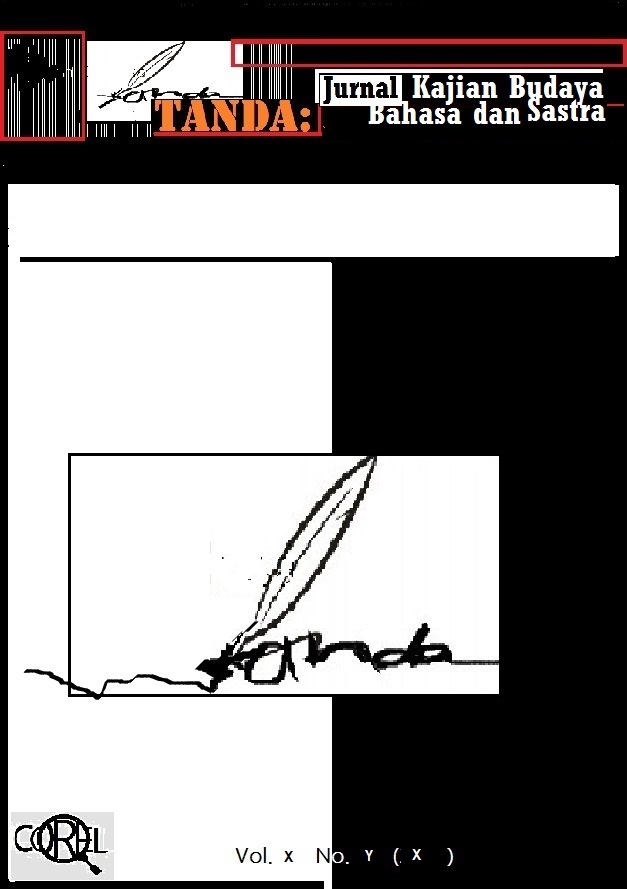RUWATAN: RITUAL PENGUSIRAN SETAN DALAM KONTEKS BUDAYA DAN TRADISI MASYARAKAT JAWA
DOI:
https://doi.org/10.69957/tanda.v3i05.1929Keywords:
Culture, Tradition, Ruwatan, Ritual, Exorcism, Javanese SocietyAbstract
Stories and myths are not just stories; they have meaning and structure. The structure of a myth is an expression of the society that supports it. Structure and model become expressions of society at a subconscious level and can only be explored through Lévi-Strauss's structuralist analysis. The Dieng exorcism ritual is a folktale that exists in the Dieng community. The Dieng exorcism ritual does not have any ritual content, but contains many community beliefs. The purpose of this study is to describe the exorcism ritual of the Dieng community, especially its identifying elements and mythological content. This ritual is performed every year on the first day of the month of Sura in the Javanese calendar. Broadcast time is 05.00-14.00 WIB. The location is at Lake Bale Kamban, Dieng Banjarnegara, Central Java. The Dieng exorcism ritual includes location, time, tools, offerings, prayers, and myths. This myth is about Gember hair and the exorcism ritual by cutting Gember hair. The Ruwatan ritual is a complex and meaningful cultural practice in Javanese society. This study analyzes the meaning and function of Ruwatan as an exorcism ritual in the context of culture and tradition. The results of the study indicate that Ruwatan not only functions as an exorcism ritual, but also as a means of maintaining social balance and harmony. This study contributes to a deeper understanding of the role of culture and tradition in shaping the identity and life of society.
References
Afdalisma. (2015). Fungsi dan Makna Bahasa Mantra di Kabupaten Solok (Kajian. Antopolinguistik). Skripsi. Padang: Fakultas Ilmu Budaya
Fungsi, Telaah, and D A N Makna. (2015). “Ringkasan Disertasi Ruwatan Murwakala Di Jakarta Dan Surakarta :” (September): 201–17.
John Harold. (2006). Manajemen Sumber Daya. Manusia. Jakarta. Salemba Empat.
Michael Hornsby-Smith & Margaret Petit. (1975). Social, Moral and Religious. Attitudes of Secondary School. Journal of Moral Education, 4 (3)
SA Rusdiono • (2020 — 2006). Strukturalisme Lévi-Strauss: Mitos dan karya Sastra. Yogyakarta: Kepel Press
Widyatwati Ken. (2012). “Tradisi Ruwatan Bagi Masyarakat Dieng.” Jurnal HUMANIKA 15(9): 1–16.
Downloads
Published
How to Cite
Issue
Section
License
Copyright (c) 2023 Kevin Laksana putra, Ilham Maulana

This work is licensed under a Creative Commons Attribution-ShareAlike 4.0 International License.
Authors publishing in TANDA: Jurnal Kajian Budaya, Bahasa dan Sastra e-ISSN 2797-0477 will be asked to sign a Copyright Determination Form. In signing the form, it is assumed that the author has obtained permission to use copyrighted or previously published material. All authors must read and agree to the terms outlined in the form, and must sign the form or agree that the corresponding author can sign on their behalf. The article cannot be published until the signed form has been received. It is a condition of publication that authors grant copyright or license the publication rights in their article, including the abstract, to jurnaltanda@gmail.com. This allows us to ensure full copyright protection and to disseminate the article, and of course the Journal to the widest possible readership in both print and electronic formats.













